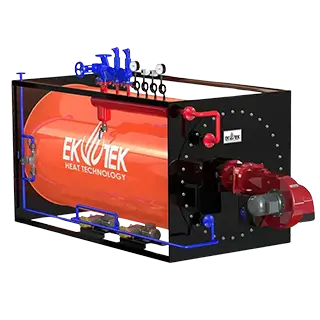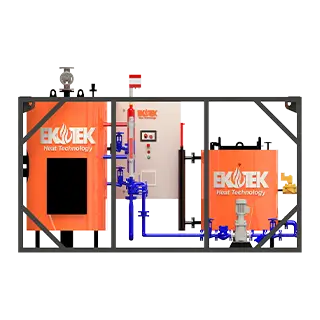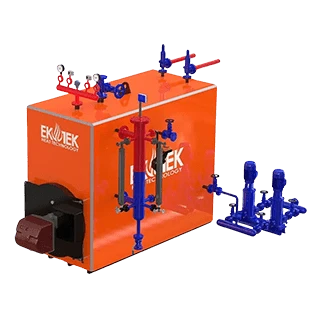Steam generators are used as a powerful and efficient energy source in the industrial sector. These devices, which heat water and convert it into steam, can be used in heating systems, chemical processes, food processing, and many other areas. Steam generators can operate with different fuel types such as electricity, diesel, and natural gas, and can be manufactured in various capacities.
Ekotek steam generators offer comfortable and high-efficiency combustion performance with low back pressure values. With its 3-pass design, the flame and smoke are in contact with the entire combustion surface, ensuring the most efficient use of the combustion surface.





